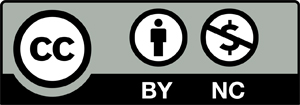Removal of Reactive Green 12 Dye and COD from Simulated Wastewater Using Different Coagulants
Abstract
The ability of using each of the following: aluminum sulphate (Al2(SO4)3.16H2O), ferric chloride (FeCl3), and ferrous sulphate (FeSO4) as chemical coagulants was investigated for removing of reactive green 12 (RG 12) dye and chemical oxygen demand (COD) from simulated wastewater. Best pH , coagulants dosages, and initial concentrations were obtained by jar test. The maximum efficiency for removing RG-12 and COD recorded by ferric chloride were 98% and 88 %, by alum were 95% and 88%, and by ferrous sulphate were 70% and 50%. All these results obtained at the best pH 6, dosage 100 mg/l and initial concentrations for RG-12 and COD 50 mg/l and 600 mg/l respectively. The maximum volume of sludge was for alum coagulant 14 ml/l, 12 ml/l for ferric chloride and 0.5 ml/l for ferrous sulphate. The study improved that it is possible to use each of aluminum sulphate, ferric chloride and ferrous sulphate as an economical coagulant to treat the wastewater which it is polluted with RG 12 dye and COD.


